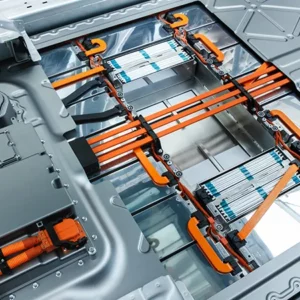Energy innovation in Europe is increasingly driven by advancements in software and artificial intelligence, which are playing a crucial role in transforming the continent’s energy systems. As Europe targets climate neutrality by 2050, modernising the electricity grid to incorporate renewable energy sources and manage decentralised energy production is essential. Generative AI and software lead this...
Low-Energy Fridays: Why is it so hard for the government to build EV charging stations?
As Mike Tyson famously said, everyone has a plan until they get punched in the face. He wasn’t talking about electric vehicle (EV) charging stations, of course, but the quote might as well apply to challenges the Biden administration has faced in expanding the nation’s network of EV charging infrastructure. The administration started with big plans....
Navy picks Quantico for nuclear power site
The Marine Corps base at Quantico could have its own small nuclear reactor to insulate it from power outages if plans floated by the U.S. Navy earlier this month are fruitful. Quantico is one of seven Navy and Marine Corps bases, including four in Virginia, slated for its own nuclear-based power supply. The information is...
What To Expect On The Regulatory Front In A Second Trump Term
Donald Trump won a decisive victory last week and will reoccupy the Oval Office in January. Polls suggest that dissatisfaction with the economy was one of the main reasons for his comeback and experts attribute the better economy during his first term to his tax cuts and deregulation (more than his immigration and trade policies). While Trump made fewer campaign promises...
Houston firm closes oversubscribed $450M fund for clean energy innovation
Houston-based private equity firm Pelican Energy Partners has raised a $450 million fund to invest in nuclear energy services and equipment companies. Pelican had aimed to raise $300 million for Pelican Energy Partners Base Zero LP and had imposed an initial “hard cap” of $400 million. Investors include endowments, foundations, family offices, and pension plans....
Battery Material Characterization Advancements Boost Renewable Energy Innovation
Climate change is a top priority on the global agenda and is impacting the way all industries operate and are regulated or governed. The 2016 Paris Agreement set out to limit temperature increases to “1.5 °C above pre-industrial levels”, with an end goal of restricting the increase in the global average temperature to “well below...
Farm Bill Faces Uncertain Path Forward Post-Election
While the election is now behind us, the future of the long-awaited Farm Bill remains in question. Farmers and ranchers have been waiting for the reauthorization of the bill for more than a year, since the last bill expired in September 2023. While there is a ready, bipartisan-supported version released by House Agriculture Committee Chair GT Thompson, it remains...
America’s Struggling Solar Industry Has a New Comeback Plan
For years, U.S. officials have complained about Chinese companies ripping off American technology to build their own industries, a practice known as “technology transfer.” In industries like autos, Beijing required U.S. companies set up joint ventures with Chinese firms, which helped jump-start China’s domestic auto industry. Now, there’s evidence that the transfer is going in the opposite...
Biden administration gives support to controversial land trade in Alaska wildlife refuge
The Department of the Interior has set the stage for a controversial land trade that would allow a road to be built through Alaska’s Izembek National Wildlife Refuge. In a draft environmental impact statement released on Thursday, the department’s U.S. Fish and Wildlife Service recommended a multi-part swap of land between the federal government and a for-profit...
New Technological Developments Could Help Lower DAC Costs
Reducing global carbon dioxide emissions is an essential part of fighting climate change. However, not every industry can easily decarbonize, so carbon capture is essential.









